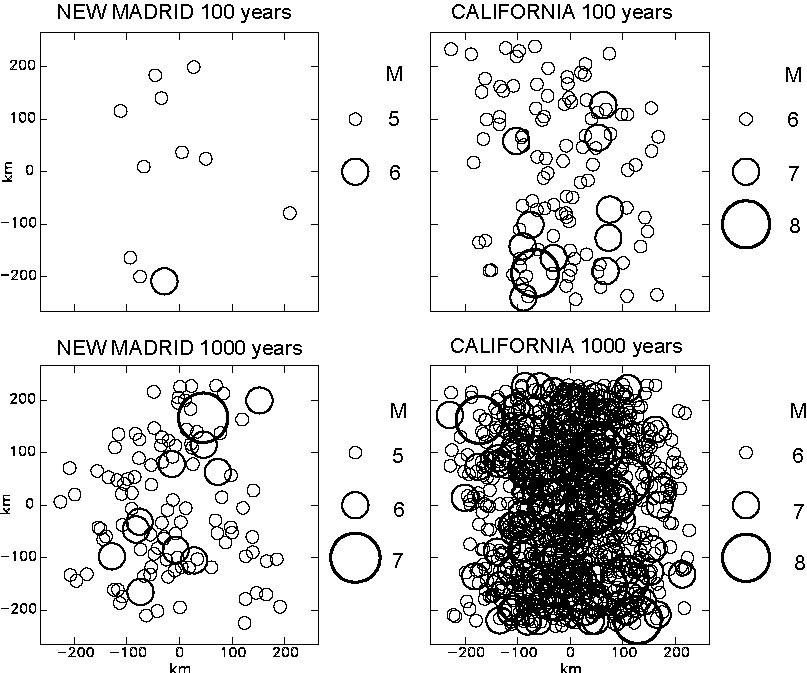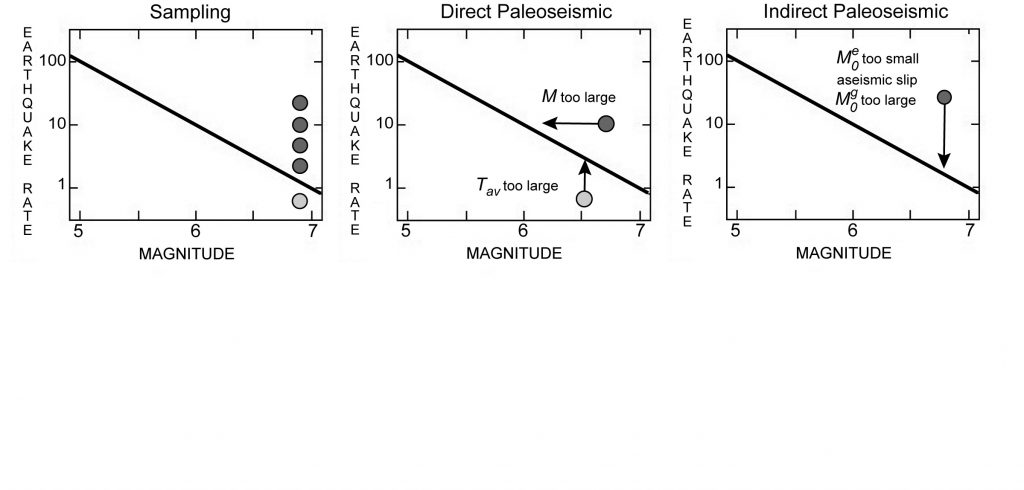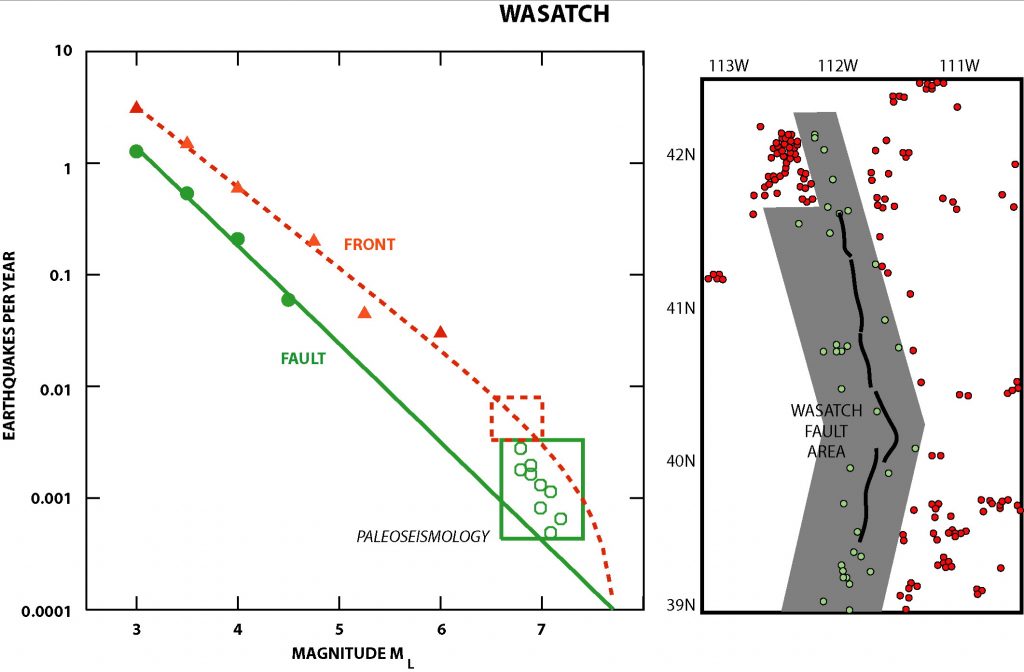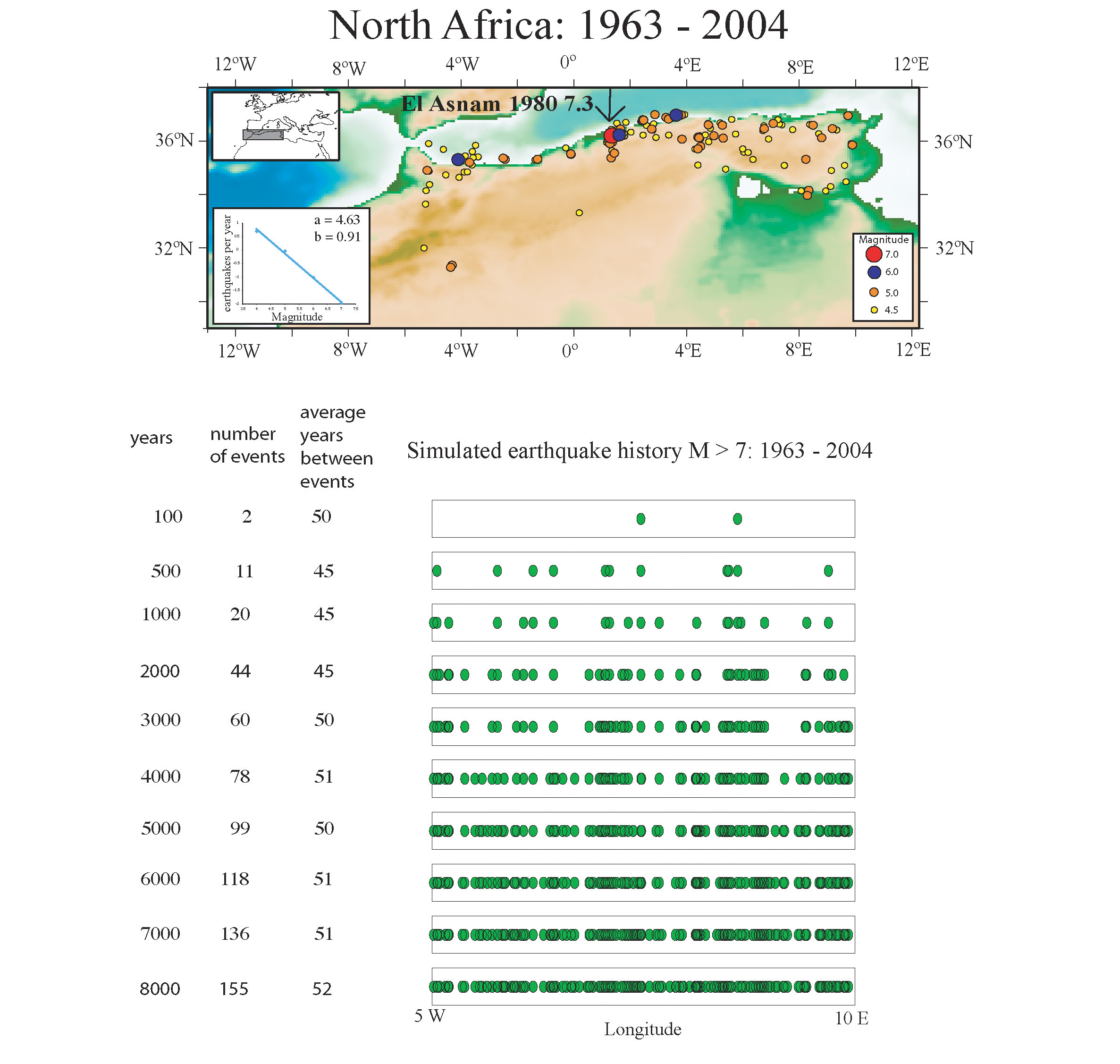 One of the major challenges for attempts to study earthquake recurrence in space and time, and the resulting hazards, are limits arising in simple but frustrating ways by the short history of instrumental seismology compared to the long and variable recurrence time of large earthquakes.
One of the major challenges for attempts to study earthquake recurrence in space and time, and the resulting hazards, are limits arising in simple but frustrating ways by the short history of instrumental seismology compared to the long and variable recurrence time of large earthquakes.
As a result, apparent concentrations and gaps in seismicity and hence seismic hazard within a seismic zone, especially where deformation rates are slow (<10 mm/yr), are likely to simply reflect the short earthquake record. Simple numerical simulations indicate that if seismicity were uniform within a tectonically similar seismic zone, such as the Atlantic coast of Canada, St. Lawrence Valley, or the coast of North Africa, thousands of years of record would be needed before apparent concentrations and gaps of seismicity and hazard did not arise. Hence treating sites of recent seismicity as more hazardous for future large earthquakes is likely to be inappropriate, and it would be preferable to regard the hazard as similar throughout the seismic zone.
Another way to see this is to consider the variations in the intervals between large earthquakes for portions of the San Andreas fault and Japan trench. Although one can define average recurrence intervals, there is a great deal of scatter.
As a result, apparent differences in seismic hazard within a seismic zone inferred from the earthquake history are likely to simply reflect the short earthquake record. A simple numerical simulation shows that apparent differences in seismicity – active regions versus ‘gaps’ – can easily result from the short earthquake history.
Similarly, various estimates of earthquake probabilities can be made and we have no way of knowing which – if any – are more useful.
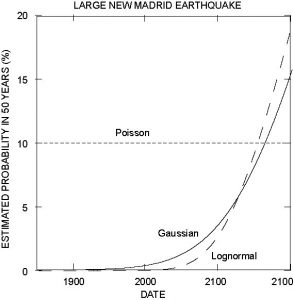 |
|
These problems have important implications for the question of whether large earthquakes are – as often assumed – are “characteristic”, more frequent than would be inferred from the rates of smaller ones. This effect can be an artifact for several reasons. First, a short history is likely to underestimate the rate of large earthquakes because fractions of earthquakes cannot be observed. Second, because the rates of small earthquakes are typically determined from the seismological record whereas the rates of large earthquakes are inferred from paleoseismology, biases in estimating paleomagnitudes can produce apparent characteristic earthquakes, as appears to have occurred for New Madrid.
A further complexity is illustrated by results for the Wasatch seismic zone, where some studies find characteristic earthquake behavior whereas others do not. The discrepancy arises primarily because some studies consider the entire Wasatch front area whereas others focus on the Wasatch fault, on which only some of the smaller earthquakes but all of the large paleoearthquakes occur. Similar situations may arise in other seismic zones containing a major fault and a number of smaller ones. In such cases, different spatial selections within a seismic zone can give different answers, and it is not clear there is a right or wrong way to do this.
A consequence of these difficulties is that a broad range of earthquake hazard estimates can be made. Often such maps depend dramatically on key parameters which are unknown and likely to remain so for many years. For discussion of this issue click here.
For a general discussion about understanding earthquake hazard maps from Earth Magazine in 2009 click here
For papers illustrating the uncertainties in hazard maps (pdf) click here and here
For a paper discussing characteristic earthquakes as possible artifacts: (pdf) click here
For a discussion about the effects of the spatial sampling window (pdf) click here
References:
A. Newman, J. Schneider, S. Stein, and A. Mendez, Uncertainties in seismic hazard maps for the New Madrid Seismic Zone, Seis. Res. Lett., 72, 653-667, 2001. For pdf click here
Stein, S. and A. Newman, Characteristic and uncharacteristic earthquakes as possible artifacts: applications to the New Madrid and Wabash seismic zones, Seis. Res. Lett., 75, 173-187, 2004. For pdf click here
Stein, S., A. Friedrich, and A. Newman, Dependence of possible characteristic earthquakes on spatial sampling: illustration for the Wasatch seismic zone, Utah, Seis. Res. Lett., 76, 432-436, 2005. For pdf click here
Swafford, L. and S. Stein, Limitations of the short earthquake record for seismicity and seismic hazard studies, in Continental Intraplate Earthquakes, Special Paper 425, 49-58, S. Stein and S. Mazzotti, eds., GSA, Boulder, CO, 2007. For pdf click here
Stein, S. and J. Hebden, Time-dependent seismic hazard maps for the New Madrid seismic zone and Charleston, South Carolina areas, Seis. Res. Lett., 80, 12-20, 2009. For pdf click here

